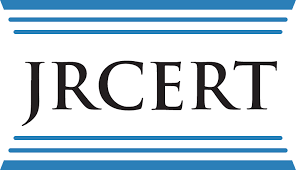Radiography
The CFCC Radiography Program is a five-semester, full-time program beginning in the Fall Semester of each year. Radiologic Technologists use x-rays to produce images of the human body for diagnosing and treating pathology.
The curriculum includes instruction in radiographic procedures, patient care, radiation protection, and imaging technique through an integration of classroom, laboratory, and clinical education. Radiographers are generally employed in hospitals, clinics, and physician’s offices. With more specialized education, a qualified Radiographer may advance into the areas of Radiation Therapy, Nuclear Medicine, Mammography, Ultrasonography, Computerized Tomography (CT), Magnetic Resonance Imaging (MRI), education, or administration.
15 years with 100% ARRT pass rate on the first attempt. “Since the inception of the program in 1995, all 418 graduates who have taken the registry have passed the ARRT national registry board exam. Class average test results are consistently 3-5% higher than the national average.”
Selective Admission Process
The TEAS test is a minimum requirement to apply for this program. Potential applicants are encouraged to complete this form if they are not sure whether they are meeting eligibility requirements or have questions about the test. Applicants should also be sure to visit the FAQ page for general questions about the test.
*Minimum requirements are subject to change each academic year. Please refer to the information packet.
Quick information
These sessions will include an optional tour of the lab after the session ends. All information sessions will cover the same information. No appointment is needed.
| Mon | Oct. 14, 2024 | 3:00 – 4:00 p.m. |
| Tues | Jan. 14, 2025 | 3:30 – 4:30 p.m. |
| Mon | March 24, 2025 | 2:30 – 3:30 p.m. |
| Mon | April 14, 2025 | 2:30 – 3:30 p.m. |
Accreditation
The program has the maximum of 8 years accreditation by the Joint Review Committee on Education in Radiologic Technology through 2030.
20 N. Wacker Drive, Suite 2850
Chicago, IL 60606-3182
312-704-5300
jrcert.org
Program Effectiveness Data
The following is the most current program effectiveness data. Our programmatic accreditation agency, the Joint Review Committee on Education in Radiologic Technology (JRCERT), defines and publishes this information. Click here to go directly to the JRCERT webpage.
Credentialing Examination: The number of students who pass, on the first attempt, the American Registry of Radiologic Technologists (ARRT) certification examination, or an unrestricted state licensing examination, compared with the number of graduates who take the examination within six months of graduation. The five-year average benchmark established by the JRCERT is 75%.
| Credentialing Examination Rate | Number Passed on 1st Attempt Divided by Number Attempted within 6 Months of Graduation |
|---|---|
| Year | Results |
| Year 1 – 2020 | 16 of 16 – 100% |
| Year 2 – 2021 | 19 of 19 – 100% |
| Year 3 – 2022 | 12 of 12 – 100% |
| Year 4 – 2023 | 15 of 15 – 100% |
| Year 5 – 2024 | 16 of 16 – 100% |
| Program 5-Year Average | 78 of 78 – 100% |
Job Placement: The number of graduates employed in the radiologic sciences compared to the number of graduates actively seeking employment in the radiologic sciences within twelve months of graduating. The five-year average benchmark established by the JRCERT is 75%.
| Job Placement Rate | Number Employed Divided by Number Actively Seeking Employment within 12 Months of Graduation |
|---|---|
| Year | Results |
| Year 1 – 2018 | 12 of 12 – 100% |
| Year 2 – 2019 | 13 of 13 – 100% |
| Year 3 – 2020 | 15 of 15 – 100% |
| Year 4 – 2021 | 14 of 14 – 100% |
| Year 5 – 2022 | 7 of 7 – 100% |
| Program 5-Year Average | 61 of 61 – 100% |
Program Completion: The number of students who complete the program within the stated program length. The annual benchmark established by the program is 75%.
| Program Completion Rate | Number Graduated Divided by Number Started the Program |
|---|---|
| Year | Results |
| Year 2024 | 16 of 17 |
| Annual Completion Rate | 94% |
*These numbers do not include non-academic withdrawals.
Mission, Goals, and Student Learning Outcomes
Mission Statement
The program’s mission is to prepare graduates to be competent radiographers.
Goals and Student Learning Outcomes in Support of the Program’s Mission
Program Goal #1
The program graduates will demonstrate competence in skills basic to the Radiography Profession.
Student Learning Outcomes in support of goal 1:
1.1 The student will competently perform routine radiographic procedures.
1.2 The student will provide proper patient care and management.
1.3 The student will demonstrate proper radiation safety practices to patients, self and others.
1.4 The student will be clinically competent by rotating through excellent clinical sites provided by the program.
Program Goal #2
The graduates of the program will be able to effectively utilize problem-solving and critical thinking skills.
Student Learning Outcomes in support of goal 2:
2.1 The student will demonstrate competence in non-routine examinations.
2.2 The student will apply critical thinking skills in the practice of diagnostic radiography.
Program Goal #3
The graduates of the program will communicate effectively with patients and healthcare teams.
Student Learning Outcomes in support of goal 3:
3.1 The student will demonstrate effective oral communication skills.
3.2 The student will demonstrate effective written communication skills
Program Goal #4
The program meets the needs of the community by providing qualified radiographers.
Program Outcomes in support of goal 4:
4.1 Students will complete the program.
4.2 Graduates of the program will indicate satisfaction with their preparation for employment.
4.3 Employers will indicate satisfaction with graduates’ quality of work.
4.4 Graduates will pass the ARRT exam on the first attempt.
4.5 Graduates will gain employment in radiography or enter advanced education programs.


